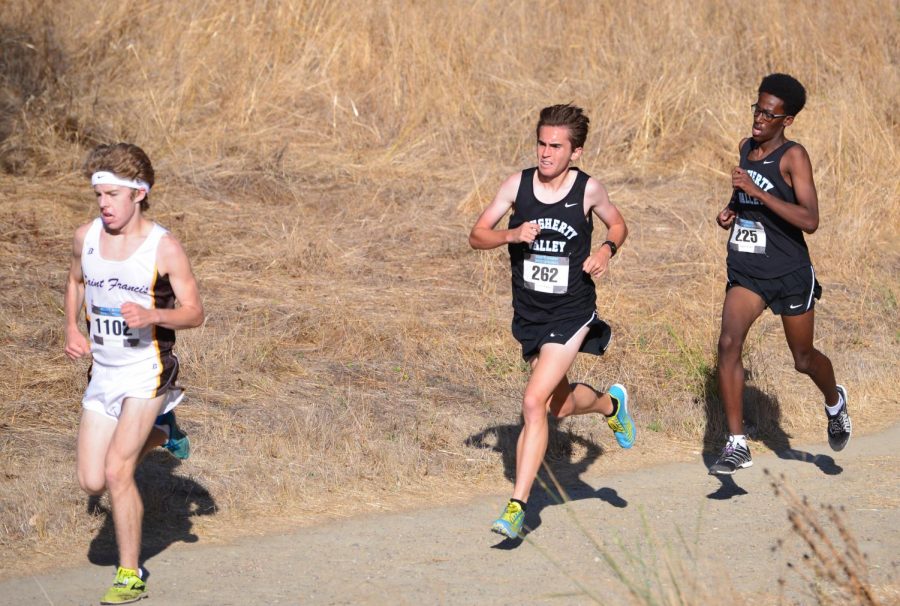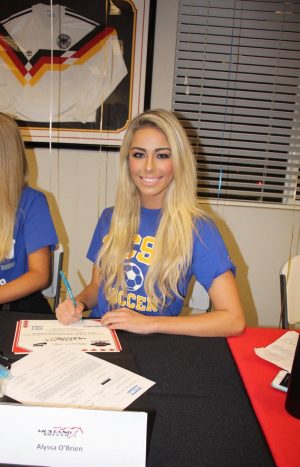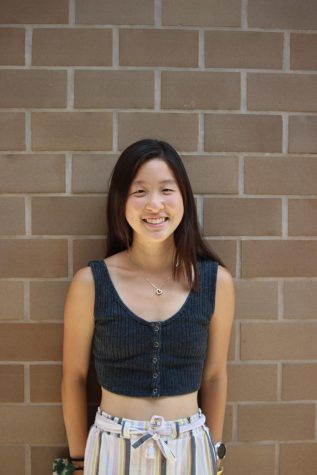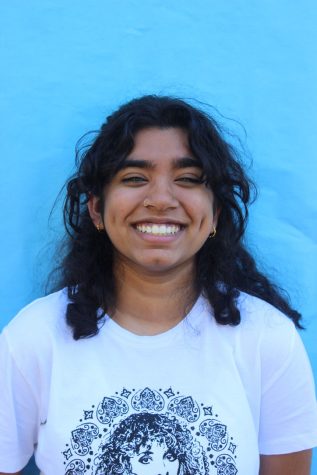Michael Schneider: a Bohemian ultrarunner in the making
March 16, 2020
It was mile 17, and Michael Schneider wanted to throw up.
The running-crazed DV senior and aspiring ultrarunner was taking on the California International Marathon, his first ever. By mile 13 he was already feeling the strain in his legs, far too early, and the unshakable notion that the next half would be rough — even by his standards.
“You can’t back out at that point, so I tumbled my way [through],” Schneider recalled. “Not that I was stopping to walk, but I was getting really dizzy and I had to throw up, but [I] couldn’t throw up, so I just kept moving.”
Starting out too fast in a marathon means gradual and inevitable death toward the finish line. Worn out from the fast early pace, Schneider leaned against a fence post at the finish, unable to stand. Walking back to his hotel was a challenge on its own. After nearly blacking out on the elevator ride up to his room, he stumbled into bed. Shivering madly from both sweat and rain, he pulled himself back out to take a 20-minute-long shower — and to throw up.
“It was super fun. While I was throwing up, I was [thinking], ‘When’s the next marathon going to be?’” he recalls.
From marathons he has turned to even longer distances, to a branch of running known as ultrarunning. Ultramarathons cover all distances over 26.2 miles, and their race courses navigate through dirt trails, mountains and rivers rather than paved roads. This March, Schneider plans to race his first 50-miler.
In a way Schneider is a mountain hermit, seeking shelter in long-distance running rather than in caves. His lifestyle is simple and wholesome in a way: his day starts at 5 or 6 a.m. with a long run; then, after school, he takes to the trails again, ending his evening run around 6 p.m. After quickly doing his homework, Schneider does some strength training and goes to bed; considering that he doesn’t take a single day off from training, sleep is a necessary source of recovery.
Even as a second-semester senior, this is a difficult lifestyle to manage. Yet, Schneider cites ultrarunners such as Jared Hazen (the 19-year-old trail-running powerhouse) and Anton Krupicka (minimalist ultrarunner and winner of the notorious Leadville 100 mile race) as role models. Seeing Krupicka put out 200 miles a week “puts everything into perspective,” Schneider said.
“What I’m doing isn’t that hard compared to this. [Krupicka’s] pushing the limit of human potential,” Schneider said.
One can imagine Schneider in the future, traversing mountain ranges with a pair of worn-out Hokas and a dirt-crusted mountain bike — his life an imitation of Krupicka’s own.
But for now, as he averages 140 miles a week, Schneider divides his time exploring trails on his own and running with friends from the DVHS cross country team and elsewhere.
“You do get bored [on solo runs], but that’s kind of the process. Sometimes I can just zone out for eight miles,” he comments.
On March 14, Schneider will race the Marin Ultra Challenge 50 miler. The renowned course crosses through Rodeo Beach, the Marin Headlands, Mt. Tamalpais and the Muir Woods, and offers 11,000 feet of elevation — equivalent to more than 2 miles of vertical climbing.
Taking a freestyle approach to training, Schneider has only a weekly mileage and elevation goal: 120-150 miles and 15,000 feet, respectively. Summiting Mt. Diablo at least once a week (or twice in a run) is a staple in his haphazard training plan. He has been teaching his body to accept fuel during runs; the goal is 250 calories per hour on race day. Besides that, he isn’t giving it too much thought.
“I’m trying to avoid [structured training], because I usually get bored of that,” he said.
Ultimately, the aim of ultrarunning isn’t a time or even a distance; the nature of the sport often lends itself to aimlessness. The process — of waking up at ungodly hours, running immense distances experiencing alternating feelings of fatigue and exhilaration — is, in the end, the essence of ultrarunning.
While running is second nature to him, Schneider seeks satisfaction not only in the physical aspect, but from the little rewards he reaps from the runs. In describing his Mt. Diablo summits, Schneider hones in on the view above the fog — of the cities below and the Sierras beyond.
“The more you spend time outside running, or just outside in general, you start to really appreciate the little things,” he reflects.
Perhaps Anton Krupicka, the artlessly Bohemian ultrarunner himself, put it best: “Running sharpens the focus on life and intensifies the emotions. Is there any better reason to do anything?”






